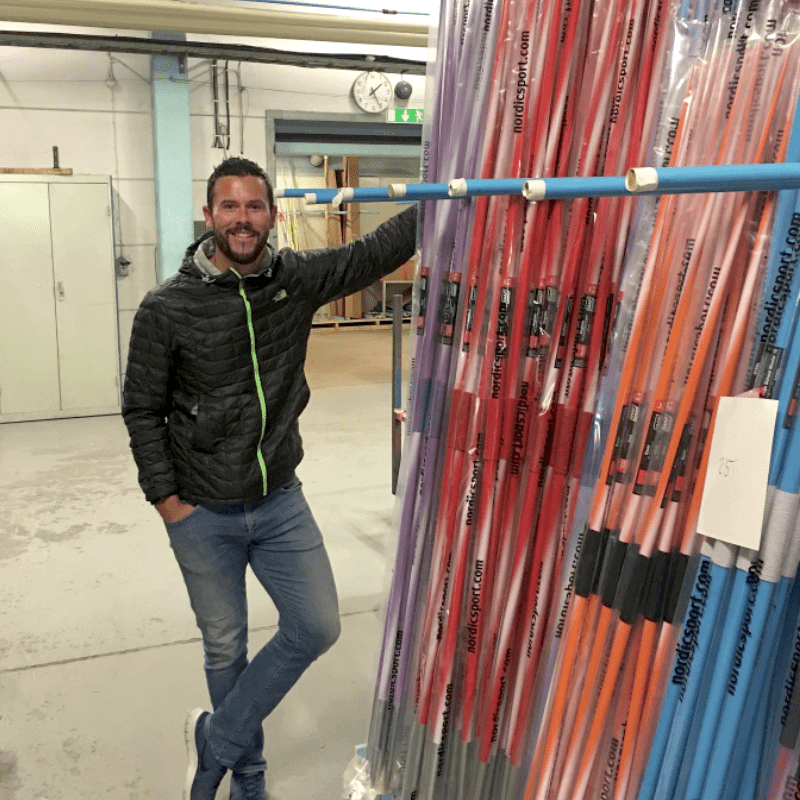Based in Shanghai, China, Coach David Parker is an impassioned javelin and conditioning coach who prioritizes athletic development, strength, and fitness when coaching his players. For many years, David Parker has been responsible for the physical development of national program athletes and supervising the growth of national programs in China. David has an undeniable passion for bringing out the best in his athletes by going beyond teaching a sport’s fundamentals to focus on the underlying movement patterns of each player.

As a coach, Coach David Parker continuously looks for new ways to help his athletes improve, and he does more than just teach them the rules of a sport; he also focuses on their body movements. This approach allows David to aid in the development of his athletes while maintaining a safe and regulated training environment. Known for his innovative and practical training methods, Coach David Parker helps his athletes improve their dynamic stability, reduce the risk of injury and be ready for anything that may come their way.
David Parker has been a strength and conditioning coach for nearly 20 years, 16 of those years spent in the high-performance arena. The United Kingdom Strength & Conditioning Association has certified David as a professional strength and conditioning coach. From grassroots to international athletes, he has extensive experience as a performance coach for both able-bodied and disabled individuals of all ages.
Currently, in his career, Coach David Parker works as the Chinese Athletics Association’s National Men’s Javelin Coach and the Shanghai Track & Field Team’s Head Performance Javelin Coach. Outside of coaching, David Parker is also a successful entrepreneur. He is a co-owner and director of Sightline Performance and The Javelin Throw. David formerly worked for British Athletics as the National Performance Institute Coach for Throws and as the Lead Throws Coach at Loughborough University, where he earned both his bachelor’s and master’s degrees.
Coach David Parker is devoted to his wife and son and wholeheartedly admits that everything he does in his life is to make the world a better place for them. Another joy in his life is supporting the premier league Liverpool Football Club. In addition to being a season ticket holder for over five years, David proudly displays the team mantra #YNWA (You’ll Never Walk Alone).
Coach David Parker Shares a Beginner’s Guide to Javelin
The sport of throwing a javelin has been around since the beginning of humankind, which many don’t know. During the ancient era, people used to hunt and kill their enemies using spears. Due to the evolution of humanity, this skill has now become a sports category and is played worldwide.
This sport aims to throw a spear-like structure, referred to as a javelin, with your bare hands using maximum force to land it within a designated area. This game is played in both men’s and women’s categories. Aside from throwing the object, the participants must also improve their judging ability and speed.
A Brief History
In ancient times, people used to hunt and kill animals using spears. Throwing a spear can be traced back to the ancient Olympics, which were held in 708 BC. The throwing of a javelin is organized into two categories: target throw and distance. In 1870, the object was first spotted in Sweden and Germany, but before this, people would only run up before throwing it. The sport was introduced in 1890 with unlimited run-ups.
The first intercalated games where the throwing of a javelin was introduced were held in 1932. It was introduced in the women’s category in the Summer Olympics the following year. The first official world record was established in 1912 by the International Association of Athletics Federations.
The Basics
A javelin is made of various essential components, which include a metal head, a shaft made of metal, and a cold grip positioned around the center of gravity. The standard length of a javelin ranges from 2.6 to 2.7 meters for men and 2.2 to 2.3 meters for women. The runway length of a stadium is 30 meters. The maximum distance of a throw is 36.50 meters. This runway is marked by parallel lines that measure 50 meters long.
The throwing arc of a javelin is composed of a circle around 8 meters wide. This strip of white paint is used to cover the object and its components. The lines along the arc should be drawn in a certain direction to create the right angle for the throw.
How to Hold a Javelin
Before throwing a javelin, one should first learn how to hold it properly. Doing so will allow one to have a proper grip on the object. One should curl one’s fingers around the device’s shaft to create a proper grip. Also, ensure that the other fingers are aligned across the body.
Throwing a Javelin
The throwing of a javelin is divided into three main parts: the run-up, the transition, and the delivery. During the run-up, a thrower uses the device to pick up and sprint until it generates enough momentum to launch the ball. The metal tip of the throwing arm is pointed toward the direction of the throw. A cord is then used to hold the pole.
Since the throwing surface of a javelin is long and wide, athletes are not allowed to go outside the runway at any point during their throw. Some prefer to use the American grip, the Finnish grip, or the V grip. The positions of the fingers on the throwing arm and the grip vary depending on the type of grip used.
The sprint phase of the throw is usually a 10-to-15-step sequence. During the crossover steps, the athlete’s body turns to the side to allow the device to be launched. The thrower then extends his or her throwing arm and moves toward the sky.
The last crossover step is longer and involves shifting the weight of the athlete’s back foot. As the front foot hits the ground, the throwing action begins. The throwing arm is extended behind the torso, and the body is moved forward. The body is then turned back, and the explosive throwing action begins.
Since the thrower must not touch the foul line, the distance from which the throw is calculated, the athlete must not deviate from their intended path. The sheer force the throwers generate during the run-up makes it challenging to slow down.
